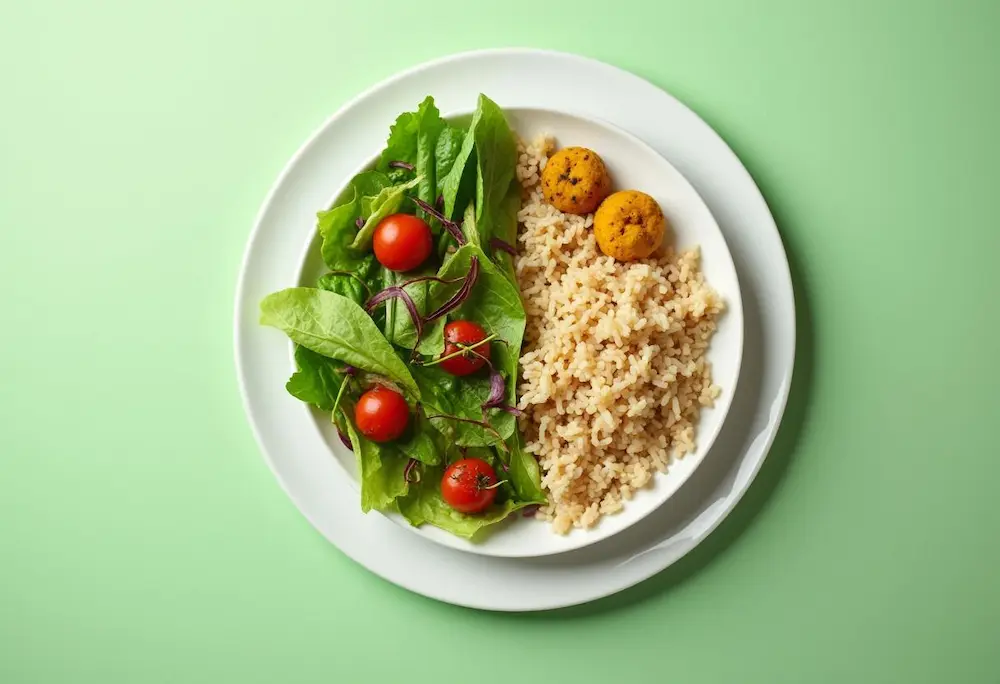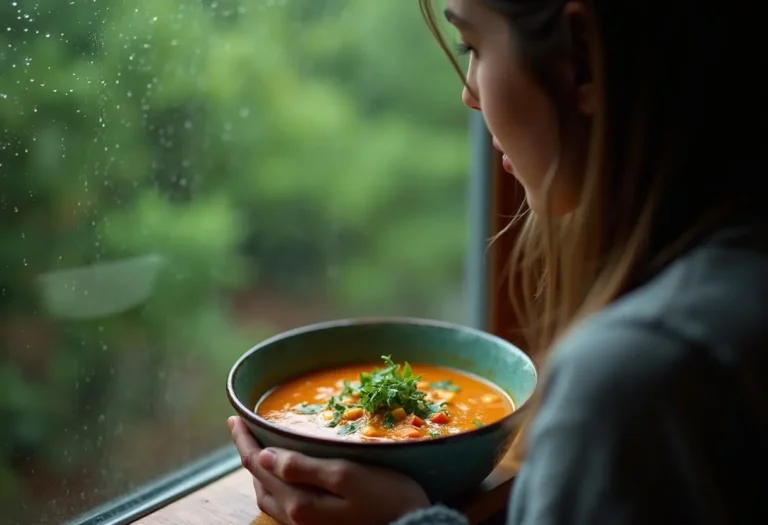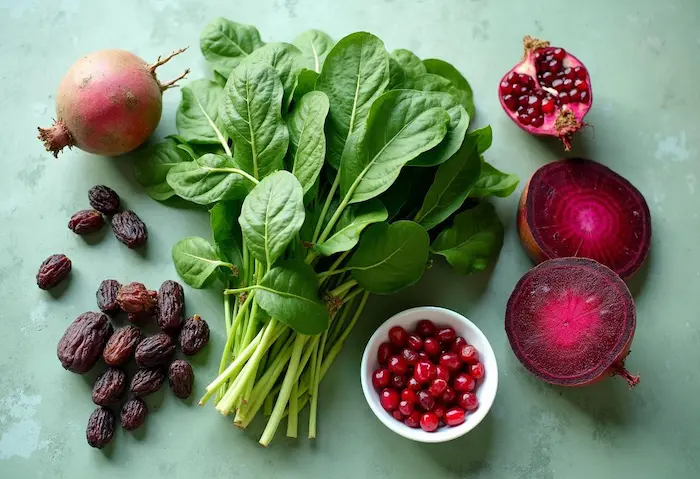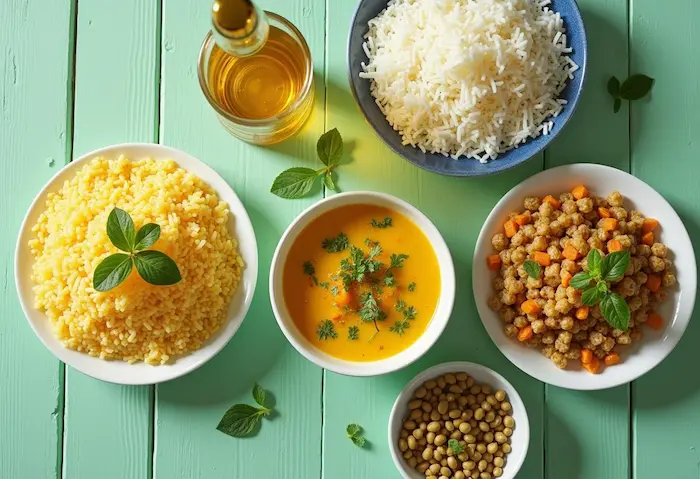Understanding what an ideal diet for a diabetic person should look like is the single most empowering and effective step you can take in managing your health and living a vibrant, fulfilling life. It’s late here in Pune, and if a recent diabetes diagnosis has you or a loved one feeling overwhelmed and staring at your kitchen with confusion and fear, please know this: you are not alone, and this journey is not about deprivation.
The word “diet” often brings to mind restriction, blandness, and giving up everything you love. But a diabetic diet is different. It’s not a temporary plan; it’s a shift towards a healthy, balanced way of eating that is beneficial for the entire family. It’s about learning to nourish your body intelligently, especially with our delicious, traditional Indian cuisine.
Let’s demystify the confusion and create a clear, simple roadmap to eating well with diabetes.
A Crucial Disclaimer Before We Begin: This article is for informational and educational purposes only. An ideal diet for a diabetic person is highly individual. It is essential to consult with your doctor and a registered dietitian to create a personalized meal plan that is right for your specific health needs.
Table of Contents
The Three Pillars of a Diabetic Diet: The Core Principles
Managing diabetes through diet isn’t about eliminating food groups; it’s about understanding them. The goal is to keep your blood sugar levels in a stable, healthy range.1 This is achieved by focusing on three core principles:
- Manage Carbohydrates: Carbs have the biggest impact on blood sugar.2 The key is to choose complex, high-fibre carbohydrates (like whole grains and vegetables) that release sugar slowly, and to manage the portion sizes of all carb-rich foods.
- Prioritize Protein and Fibre: Protein and fibre are your best friends. They don’t raise blood sugar significantly and, in fact, help to slow down the absorption of sugar from your meal. They also keep you feeling full and satisfied, preventing overeating.
- Choose Healthy Fats: Good fats (monounsaturated and polyunsaturated) are important for heart health, which is a key consideration in diabetes management.3
Building Your Plate: The Ideal Diet for a Diabetic Person in an Indian Context
The easiest way to build a healthy meal is to use the “Plate Method.”4 It’s a simple, visual way to ensure you’re getting the right balance of nutrients without complicated calculations. Imagine your plate divided into sections:
Half Your Plate (50%): Non-Starchy Vegetables
This is the largest section of your plate. These foods are low in carbs and calories but packed with vitamins, minerals, and fibre.
- Examples: Fill it up with a generous serving of cooked sabzi made from ladies’ finger (bhindi), cauliflower (gobi), cabbage, brinjal, bottle gourd (lauki), spinach (palak), and other leafy greens. A fresh salad (kachumber) is also a great addition.
One-Quarter of Your Plate (25%): Lean Protein
This section is for your protein source, which is crucial for muscle health and blood sugar control.
- Examples: A bowl of dal (lentils), chickpeas (chana), kidney beans (rajma), or paneer.5 For non-vegetarians, this would be a portion of skinless chicken, fish, or egg curry (bhurji).
One-Quarter of Your Plate (25%): Complex Carbohydrates
This is the section that requires the most mindfulness in an Indian diet. It’s about choosing the right type and the right portion.
- Examples:
- 1-2 small whole-wheat rotis (not slathered in ghee).
- A small bowl (katori) of brown rice or millets like jowar, bajra, or ragi.6
- A small portion of starchy vegetables like potatoes or sweet potatoes.
Smart Food Swaps for Your Indian Kitchen
This is where the magic happens. You don’t have to give up your favourite meals; you just need to make intelligent substitutions.
- Swap White Rice and Bread for: Brown rice, red rice, quinoa, millets, and 100% whole-wheat or multigrain rotis/bread.
- Swap Sugary Drinks and Juices for: Plain water, buttermilk (chaas), unsweetened lassi, coconut water, or herbal teas.
- Swap Fried Snacks (like Samosas, Vadas) for: Roasted chana, a sprout salad (bhel), a handful of nuts (almonds/walnuts), or steamed snacks like dhokla.
- Swap Sugary Mithai and Desserts for: A small piece of seasonal fruit (like an apple or guava), a bowl of berries, or a few dates in moderation.
- Swap Starchy Vegetables for: Non-starchy vegetables as the main part of your meal.7
Don’t Forget the Timing: The Importance of Regular Meals
An ideal diet for a diabetic person is also about when you eat.8 Skipping meals can cause your blood sugar levels to drop too low, which can then lead to overeating and a sharp spike at your next meal. Aim to eat small, balanced meals and snacks every 3-4 hours to keep your blood sugar stable throughout the day.
Conclusion: A Journey of Empowerment, Not Restriction
Receiving a diabetes diagnosis can feel like your world of food has shrunk. But as you can see, it’s not about restriction; it’s about discovery. It’s about discovering the goodness of whole grains, the vibrant flavours of vegetables, and the satisfying power of protein.
You are in the driver’s seat of your health. By making these mindful, consistent choices, you are not just managing a condition—you are cultivating a lifestyle of wellness and vitality. This journey is one of empowerment, and every healthy meal you choose is a victory.
What’s your favourite healthy Indian dish that fits perfectly into a diabetic-friendly lifestyle? Share your recipes and ideas with our community in the comments below!




